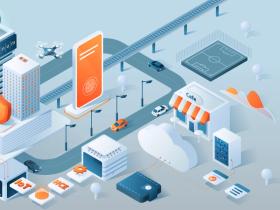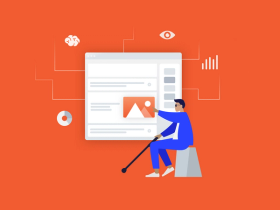How to Develop a Radio App Like Pandora
Published: May 2, 2022
15 min read
In this article, you'll learn:
1
👨🎤 What’s the Story behind Pandora?
2
🧱 3 Pillars of Radio App Development
3
📱 Top Features to Build a Radio App for Music like Pandora
4
⚙️ Tech Stack to Create a Radio App like Pandora
5
💸 How Much Does It Cost to Develop a Radio App for Music?
6
💡 Takeaways
The music market continues to show exponential growth from year to year. Moreover, modern users often expect far more advanced and diverse functionality than just music streaming. For example, they may want your application to create personalized playlists that match their preferences or use music to create own content like in TikTok.
According to RIAA, the U.S. recorded music market continues to follow the trends of previous years:
- Total revenues grew up to $5.4 billion in the first half of 2019, which is an 18% growth compared to 2018.
- Streaming services made up 80% of the industry revenues.
- Paid subscriptions accounted for 62% of the overall industry revenue.
In this article, we’ll focus on tips and tricks to create a radio app like Pandora. But first, let’s figure out why this app is so special.
👨🎤 What’s the Story behind Pandora?
Pandora’s story started with a so-called Genome Project in 1999. Will Glaser and Tim Westergren wanted to create a B2B tech company that would focus on issues of music discovery. For that purpose, they had gathered a team of musicological experts and developed their own algorithm to find similar music based on its features.
From this perspective, the good news for you is that now Pandora is only available in the US. So you won’t have to compete with this radio market monster in Europe, Canada, Australia, South America or other parts of the world. It means that creating your own radio app for music like Pandora is still an option in these regions.
But how to develop a radio app for iOS or Android? This is a way to go and let’s start our journey by defining 3 main pillars that make up a good foundation of any radio app.
🧱 3 Pillars of Radio App Development
As always, a bit later we’ll describe a list of MVP features you’ll need to create a radio app like Pandora. However, there are a few things that require your attention even before you start the development itself.
License 📃
Obviously, you’ll need a legal right to use someone’s music in your application. That’s why the license is what you should think about before everything else.
How can you get it? Contact the copyright owner and buy it. Almost always professional publishers and songwriters belong to one of these organizations — BMI, SESAK or ASCAP. Consider them as a place to look for the contact information for the owner.
However, Pandora relies on a completely different approach as we’ve figured it out earlier. This approach is also known as the content-oriented method since it involves the analysis of songs’ features itself.
The content-oriented approach proves to be more accurate and effective, however, it also requires more effort. After all, you will have to develop your own system of song analysis which is quite a tricky task.
📱 Top Features to Build a Radio App for Music like Pandora
It’s always crucial to make up a comprehensive list of features for your radio app like Pandora before you start developing it. It will define the scope of work, main fields of expertise to look for in your future tech partner and let you estimate development time and costs.
How do we do it? We at Stormotion are the true fans of Lean Methodology that recommends beginning with an MVP.
It means that you should focus only on those features that are vital for your audience. Thus, you’ll be able to prove your idea to be viable and gradually scale it without wasting time and resources.
**
The music discovery player is quite similar but has a few distinctive features. For example, it has “Thumb Up” and “Thumb Down” buttons to shape music recommendation algorithms.
Also, it doesn’t have a Return button. Instead, there’s a Repeat button but to use it users should either have the Pandora Premium subscription or watch ads to get access to this feature.
You could notice another monetization option for a radio app using a freemium model. I’m talking about the visual ads instead of the song cover.
Like in the first player, swipes up that open an advanced menu with detailed info about the artist and possibilities to add, share or bookmark the song work here as well.
Search 🔍
Search is another must-have feature in your Pandora-like application. It doesn’t have any specific features so our general recommendations would be:
- Save the last search requests so users can quickly redo them.
- Eventually, you may add the voice search feature but it’s something that can be avoided at the MVP stage.
- Autosuggestion is another good feature to enhance the in-app Search. However, just like the voice search, it may wait for later updates.
What technologies will help your team deliver these features? Let’s check the tech stack!
⚙️ Tech Stack to Create a Radio App like Pandora
Here are a few technologies that can help you during your radio app development. Save it for your tech team!
- For Push Notifications implementation we recommend using OneSignal, Firebase Cloud Messaging or Airship.
- To enhance the Sign Up process with the Social Login feature use APIs of popular social media like Instagram, Facebook or Twitter.
- Also, the Facebook Mobile SDK can be used in many other ways. For example, you may gather analytics, provide customers with support via Messenger or even set up monetization.
- Amazon S3, Google Cloud Storage and Azure offer good cloud storage services.
💸 How Much Does It Cost to Develop a Radio App for Music?
Our developers made an approximate estimate of radio app development based on the most popular features. However, don't forget that these are only the rough numbers.
Was it helpful?
Read also

What is Prototyping in IoT and Some Practical Advice

What is IoT Device Management?

How to Make your React Native Application Accessible to ALL, not just to MANY
Our clients say
![Stormotion client Pietro Saccomani, Founder from [object Object]](/static/40e913b6c17071a400d1a1c693a17319/b0e74/pietro.png)
They make the whole business work for us, and their improvements are fundamental to our operations. They’re reliable, honest, and willing to try new things that will help us. We appreciate how flexible and easygoing they are.
Pietro Saccomani, Founder
MobiLoud
